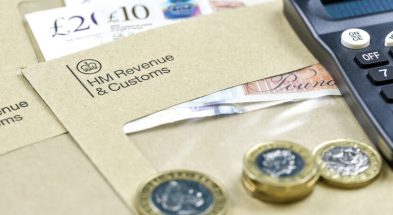

FRS 102 The Financial Reporting Standard applicable in the UK and Republic of Ireland deals with financial instruments in two sections: Section 11 Basic Financial Instruments and Section 12 Other Financial Instruments Issues.
For the majority of AAT Licensed Members and members working for firms/companies, Section 11 will be the most frequently used section as Section 12 tends to deal with those types of instruments with complex features as well derivative instruments. Typical examples of a ‘basic’ financial instrument are as follows (the list below is not exhaustive):
We look at some of the technical aspects of Section 11 using an example of a hire purchase agreement as this is something most AAT Licensed Members and other members will come across in their day-to-day working lives.
When a financial instrument falls to be classed as basic they are generally measured at amortised cost. Most debtors and creditors which are classified as current assets or current liabilities are still measured at the undiscounted amount of cash expected to be received or paid. The amortised cost of a financial asset or a financial liability at each reporting date is defined as the net of the following four amounts:
Understandably, this definition will cause some confusion for many, but there are tools available to members which will help to apply this (i.e. Microsoft Excel) and the example that this article works through uses Microsoft Excel to calculate the effective interest.
The effective interest method is a method of calculating the amortised cost of a financial asset or financial liability (i.e. the carrying amount of the instrument in the balance sheet) and then allocating the interest income/expense over the relevant period on an actuarial basis using the effective interest rate.
The amortised cost of a financial asset and financial liability is the present value of future cash receipts/payments which are then discounted at the effective interest rate.
The effective interest rate is the amount that exactly discounts estimated future cash payments or receipts through the expected life of the financial instrument (or, where appropriate, a shorter period), to the carrying value of the asset or liability.
We’ll take a look at an example using a hire purchase contract that illustrates this theory.
A company enters into a finance lease for an item of machinery that has a fair value of £35,000 and this is also equivalent to the present value of the minimum lease payments. The term of the lease is for five years, which is also considered to be the major part of the economic life of the machine and therefore the lease qualifies for treatment as a finance lease per paragraph 20.5(c). The machine is not expected to have any residual value at the end of the five-year lease.
The monthly payments, comprising capital and interest, are £685 per month and there is an option to purchase fee payable at the end of the lease term of £150 which is included in the final payment. The company has not incurred any arrangement fees in connection with this lease.
In years one to four, the company will pay £8,220 (£685 x 12) and in year five it will pay £8,370 (£685 x 12 + £150). The lease provisions are profiled in an Excel spreadsheet as follows:

The formulas used in the spreadsheet above are as follows:

The Goal Seek function in Excel can be used to work out the effective interest rate in cell C1 that can then be applied to cells D6 to D10 resulting in cell E10 becoming £nil.
To use the Goal Seek function go to the Data tab at the top of the Excel workbook and then into ‘What-if Analysis’ and select ‘Goal Seek’.
The objective is to get cell E10 to show a value of £nil by changing cell C1 so as to work out the interest over the life of the lease that will be recognised in profit or loss. Once we select the Goal Seek function, we enter the following information:

Once we click ‘OK’, Excel will calculate the effective interest rate in cell C1 and the interest expense in cells D6 to D10 automatically as follows:

The effective interest rate has been calculated at 5.72% and is allocated to each period during the term of the lease in order to produce a constant periodic rate of interest on the remaining liability. (Note you might have to set cell C1 to ‘percentage’ [Format | Cells | Number | Percentage] to two decimal places for this to work properly). It is to be noted that interest charges are higher in the earlier years of the lease and lower in the later years. In contrast, the level spread method would have charged an amount of £1,250 per annum over the life of the lease (£41,250 less £35,000 ÷ 5 years).
While the effective interest rate method is inherently more complex than, say, the level-spread method, it does produce a more realistic interest expense in the profit and loss account as it is based on the remaining balance of the liability. Using this functionality within Excel means that you only have to do the calculations once because you can carry forward the spreadsheet to future years as the interest expense and creditor falling due within, and more than, one year is already calculated for you. Therefore, once members have got used to doing this, they will find that it is actually easier than the level-spread or sum-of-the-digits method used in the calculation of interest under previous UK GAAP.
The depreciation charges on this machine are charged over the life of the lease at an amount of £7,000 as there is no residual value expected at the end of the useful economic life of five years.
The journal entries in respect of this machine in year one are as follows:
Dr Plant and machinery additions 35,000
Cr Finance lease obligation 35,000
Being introduction of new machine on a finance lease
Dr Depreciation expense 7,000
Cr Accumulated depreciation 7,000
Being depreciation charge in year 1
Dr Finance lease obligation 8,220
Cr Cash at bank 8,220
Being payment to lessor in year 1
Dr Interest expense 2,004
Cr Finance lease obligation 2,004
Being interest on finance lease under EIR
The creditor at the end of each year is then shown in the balance sheet (statement of financial position) at the amount falling due within one year (current) and the amount falling due after more than one year (non-current/long-term).
The use of the amortised cost method in Section 11 has caused an element of concern among AAT Licensed Accountants and members since the introduction of FRS 102. However, using Microsoft Excel’s Goal Seek function will enable you to be more efficient in your work and it will also enable the correct amounts of interest to be incorporated into the financial statements. The Goal Seek function can also be used for bank loans and other types of financing arrangements.
Steve Collings is the audit and technical partner at Leavitt Walmsley Associates Ltd.






The Association of Accounting Technicians.
30 Churchill Place, London E14 5RE
Registered charity no.1050724.
A company limited by guarantee (No. 1518983).